100 Top Technologies: 'Aerodynamic Experiments' To 'Modern Monoplanes'
Guy Norris Graham Warwick May 06, 2016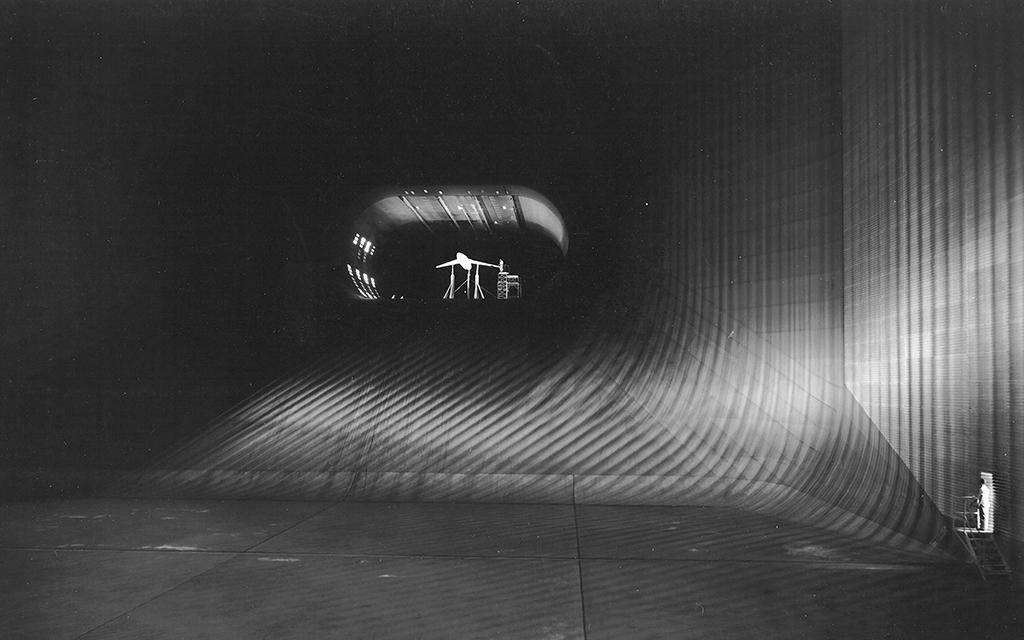
1. Wind Tunnel
The first wind tunnel was built in 1871—32 years before the Wright brothers’ first flight—by Britain’s Frank Wenham, when aviation pioneers realized they needed to understand lift and drag. The largest tunnel is the 80 X 120-ft. National Full-Scale Aerodynamics Complex at the NASA Ames Research Center. The fastest is the Mach 30 LENS-X at Calspan.

2. Parachute
Practical parachutes for airmen came in the 1920s from an observation in World War I: German military aviators, equipped with “crude” parachutes in nearly all their aircraft, survived jumps while British aviators, who did not carry the devices, did not. “During the war, I estimated about 200 British pilots were seen to jump without parachutes from their burning machines . . . rather than be roasted to death in mid-air,” wrote Royal Flying Corps Maj. Thomas Orde-Lees in the Oct. 17, 1921, issue of Aviation. He said the British rejected parachutes due to the extra 28 lb. they added to gross weight.

3. Flying Boat
Until bomber development during World War II produced the long-range landplane and hundreds of suitable runways around the world, the way to cross an ocean by air was in a flying boat. From 1931 to 1946, Pan American’s Sikorsky and Boeing Clippers plied routes to Latin America and across the Atlantic and Pacific. BOAC’s Short Empires linked Britain with its colonies through the 1930s and ‘40s. Consolidated Catalinas and Short Sunderlands were among the most used maritime patrol aircraft of World War II. The U.S. Navy stuck with flying boats, even in the 1950s planning an entire sea-based nuclear strike force comprising Martin P6M SeaMaster jet bombers, Convair F2Y Sea Dart supersonic fighters and Convair R3Y Trademaster tanker/transports. But the idea died and the Navy retired its last flying boat in the late 1960s. Today, Beriev’s Be-200, the Bombardier 415 “Superscooper,” Japan’s Shinmaywa US-2B and China’s large AG-600 keep the flying boat afloat.

4. Biplane
As aviation began, structures were not strong enough to enable the large wings needed. So the idea was born to stack smaller wings atop each other to get the lifting area required and bracing them together for strength. The biplane was the dominant configuration well into the 1930s. Obsolete by World War II, biplanes still saw combat, notably Royal Air Force Fairey Swordfish that helped sink the Bismarck. The Curtiss Condor II was the last biplane airliner, but it entered service at the same time as the monoplane Boeing 247 and Douglas DC-2 and could not compete. Perhaps the most successful biplane is Antonov’s An-2 single-engine agricultural/utility aircraft, which first flew in August 1947. Production ran for 45 years. Sixty years later, more than 4,000 were still flying.

5. Aerodynamic Controls
Generally, aircraft are controlled with elevators (pitch), ailerons (roll) and rudders (yaw). The elevator and rudder appeared in design sketches as early as 1876. The aileron is credited to Britain’s Matthew Piers Watt Boulton in 1868. The Wrights chose wing warping, but by 1911 the hinged aileron had prevailed.

6. Airport
Airports have come a long way since the U.S. Army Signal Corps established a training base at College Park, Maryland, to teach a couple of military officers how to fly the government’s first airplane—a Wright Type A biplane. College Park, called the world’s “oldest, continuously operating airport” remains, and approximately 50,000 others are operational worldwide.
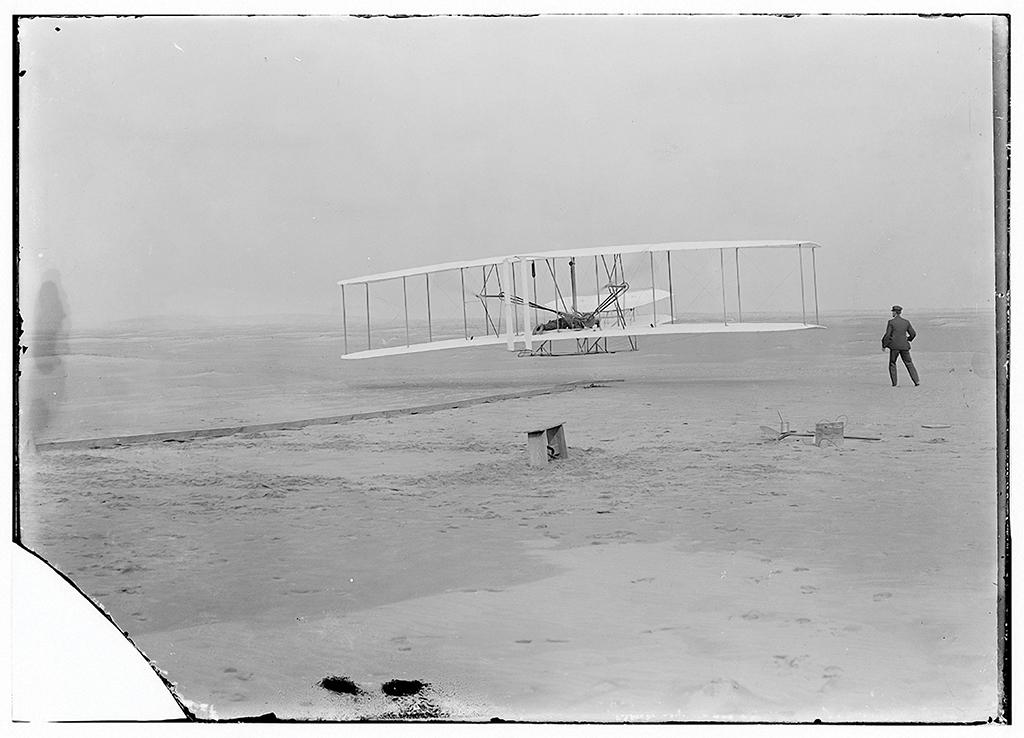
7. Wing Warping
Key to the Wrights’ achievement of controlled and sustained powered flight was the use of wing warping for lateral control—twisting the wingtips to increase angle of attack on one side and reduce it on the other, causing the aircraft to roll.

8. Two-way Radio
With almost constant connectivity between aircraft and the ground today, it is easy to forget the momentous occasions 100 years ago that ushered in the modern age of air-ground communication. According to the Jan. 15, 1917, issue of Aviation, the U.S. Army Signal Corps reported successes with air-ground and air-air radio connectivity during several tests in Southern California in the summer of 1916.
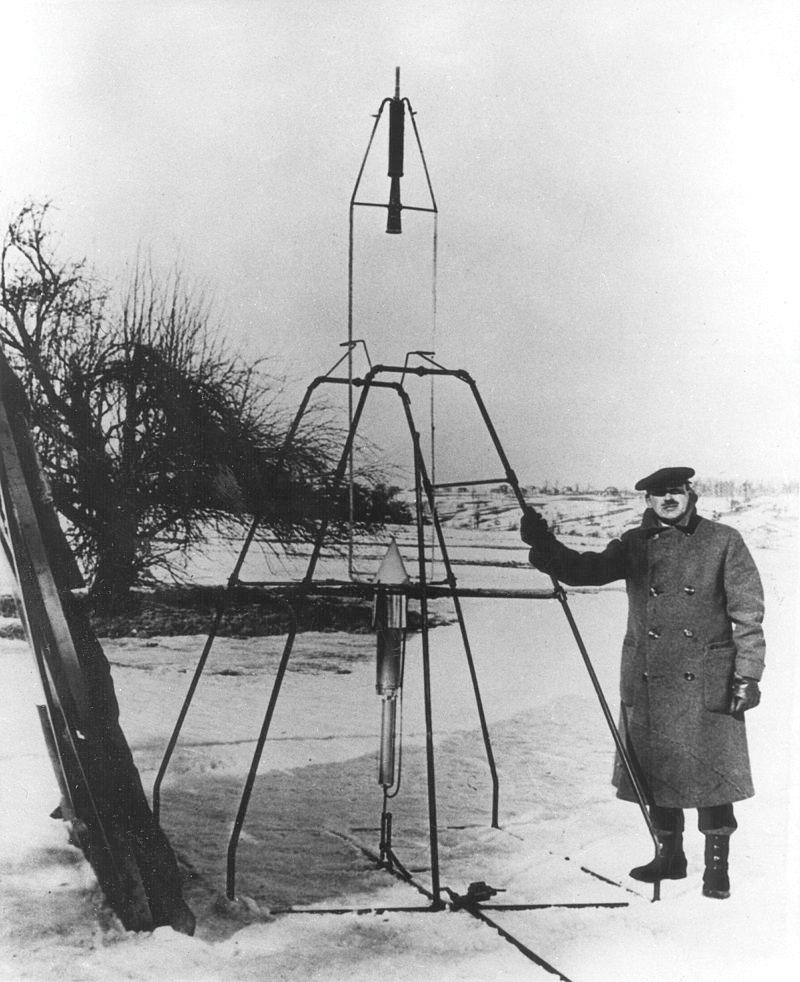
9. Liquid-rocket Propulsion
It was an achievement as significant to spaceflight as that of the Wright brothers at Kitty Hawk was to air flight. In 1926, Robert Goddard, a physics professor at what is now Clark University in Worcester, Massachusetts, flew the world’s first liquid-fueled rocket. Solid-fueled rockets had existed for centuries and continue to be useful today. But liquid-fueled engines can provide advantages in energy density, and they can be throttled. Goddard built on the experiments and theory of Russia’s Konstantin Tsiolkovsky, whose work also influenced Hermann Oberth, the father of German rocketry.
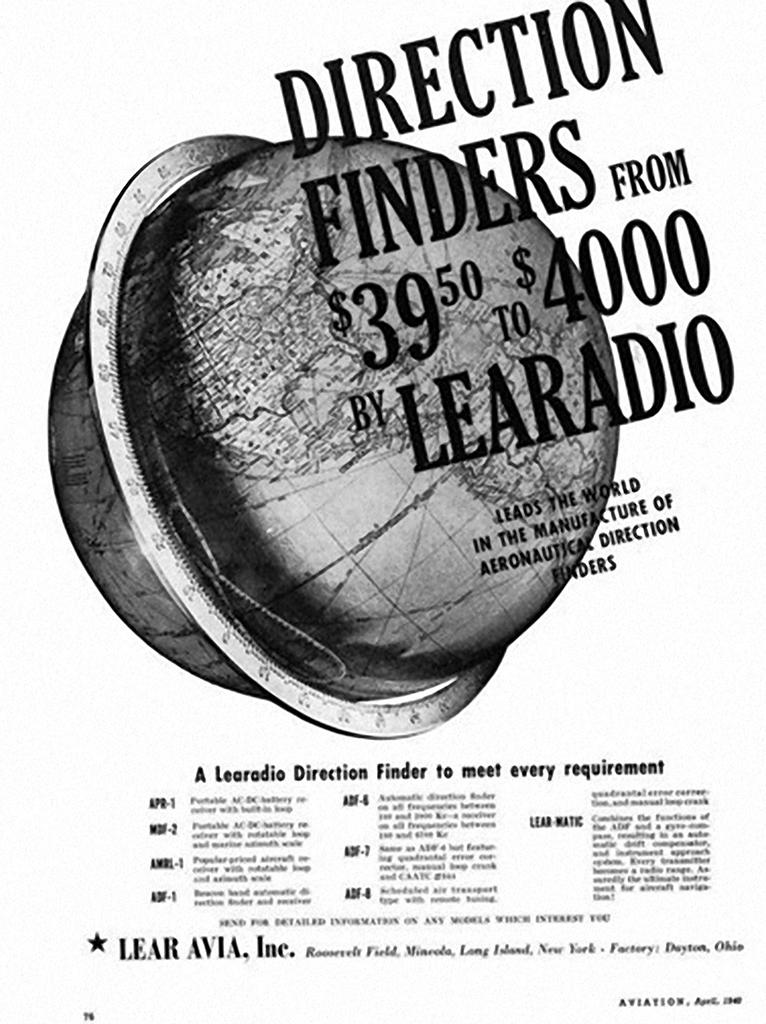
10. Radio Navigation
Three globally used methods of navigation—non-directional beacons (NDB), VHF omni-directional ranging (VOR) and distance-measuring equipment (DME)—continue to be commonplace in the cockpit since introduction in the 1930s, 1940s and 1950s, respectively, but are quickly being relegated to backup roles by global navigation satellite systems, including GPS.

11. Air Traffic Control
Unlike many modern-day advances in aviation, the U.S. federalization of air traffic control (ATC) more than 70 years ago was not in reaction to a disaster. Rather, the Bureau of Air Commerce proactively took control of en route traffic in 1936 and airports in 1941 because of fears that an accident was imminent. According to a report several years ago by the FAA’s historian, Theresa Kraus, the introduction of “modern aircraft” in the 1930s—the Boeing 247 and Douglas DC-2 and -3—spurred demand in air travel to increase 300% from 1934 to 1939. Kraus says near-misses became commonplace, leading to calls for government intervention. The bureau’s first ATC supervisor urged his superiors to find funding to ensure the takeover. “Funds should be made available at once to enable the formative work to go forth,” he said. “The fact that there have been no major disasters caused by collision in the air has . . . been a matter of luck rather than forethought, and I cannot urge too strongly, basing my statement on first-hand knowledge, that the bureau . . . move on this problem with the utmost speed, as the consequences of such a collision would provoke . . . a storm of comment and criticism such as never been seen before.”
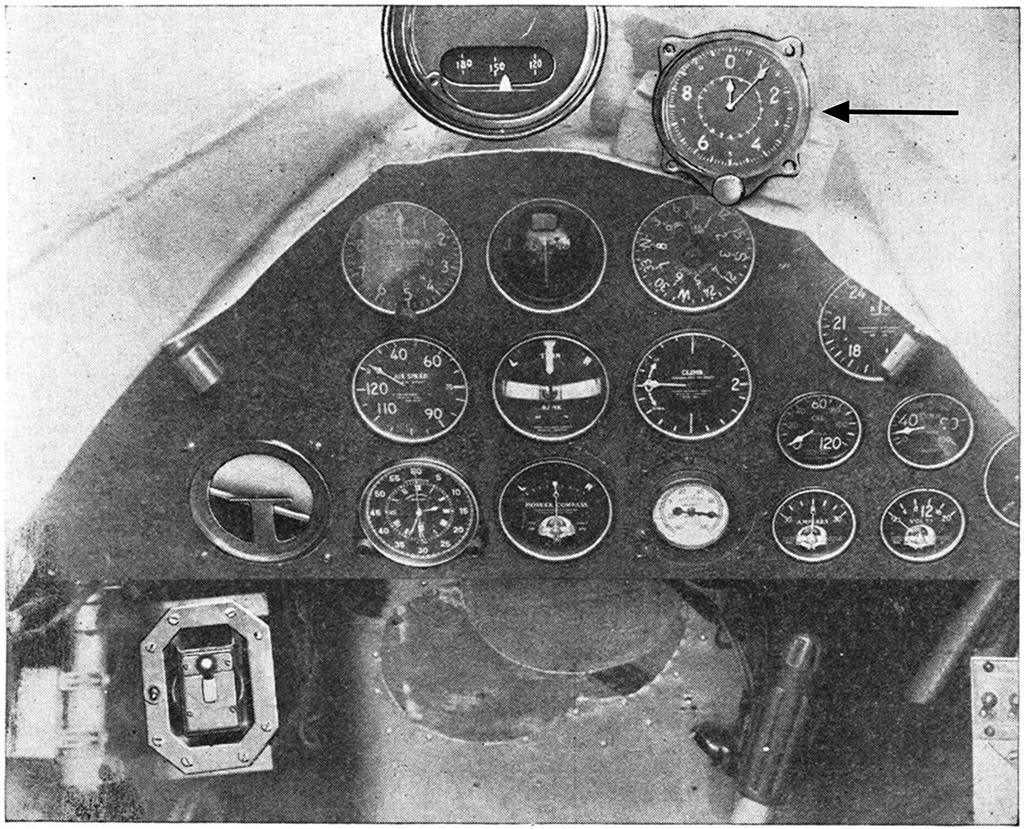
12. Altimeter
It was 1928 when German-American inventor Paul Kollsman created “the world’s first accurate barometric altimeter,” a system that uses a stack of evacuated, corrugated bronze aneroid capsules that expand or contract based on the static pressure at altitude. The following year, American aviation pioneer Jimmy Doolittle made the devices a household aviation name when he flew the first “blind” or fog-flying experiments, using a Kollsman altimeter. Today, the sensitive altimeter with a “baro-set” feature called the Kollsman window continues to be an aircraft mainstay worldwide.

13. Artificial Horizon
Use of artificial horizons is first mentioned in an Aug. 28, 1922, issue of Aviation, where writers discussed National Advisory Committee on Aeronautics Report No. 131 on the evolution of “aerial navigation” methods. Included were artificial horizons using “bubble, pendulum and gyroscopic types.” What ultimately became the artificial horizon, or attitude indicator, used on most general aviation aircraft is an instrument with a gyro disk spinning in a horizontal plane, with precession forces generated as the aircraft pitches and rolls. More recently, mechanical gyroscopes in many cases have been replaced on the high end by fiber-optic gyros and on the low end by MEMS gyros and accelerometers.

14. Practical Helicopter
The Breguet brothers’ Gyroplane No. 1 of 1906 and Paul Cornu’s twin-rotor design of 1907 were the first helicopters to fly, both in France. The Focke-Wulf Fw61, flown in Germany in 1936, was the first practical twin-rotor helicopter, but Igor Sikorsky’s VS-300, first flown in 1939, is considered the progenitor of the modern helicopter.

15. Pitot Tube
Named for its inventor, Henry Pitot, the pitot tube is used in combination with static measurement devices, such as static ports, to determine indicated airspeed. The tube points directly into the airflow and measures the stagnation (or total) pressure. The difference between this and the static pressure is used to determine velocity.

16. Air-cooled Engine
Early engine makers provided adequate cooling air with a design in which the crankshaft was fixed to the airframe, but the entire crankcase and cylinders rotated. The concept, made famous by the Gnome (pictured), was pioneered by French automotive engineers Louis and Laurent Seguin, who founded the “Societe des Moteurs Gnome” in 1905. Lighter and more efficient than previous direct-drive engines, Pratt & Whitney’s R-1340 Wasp in 1925 launched three decades of increasingly powerful radials.
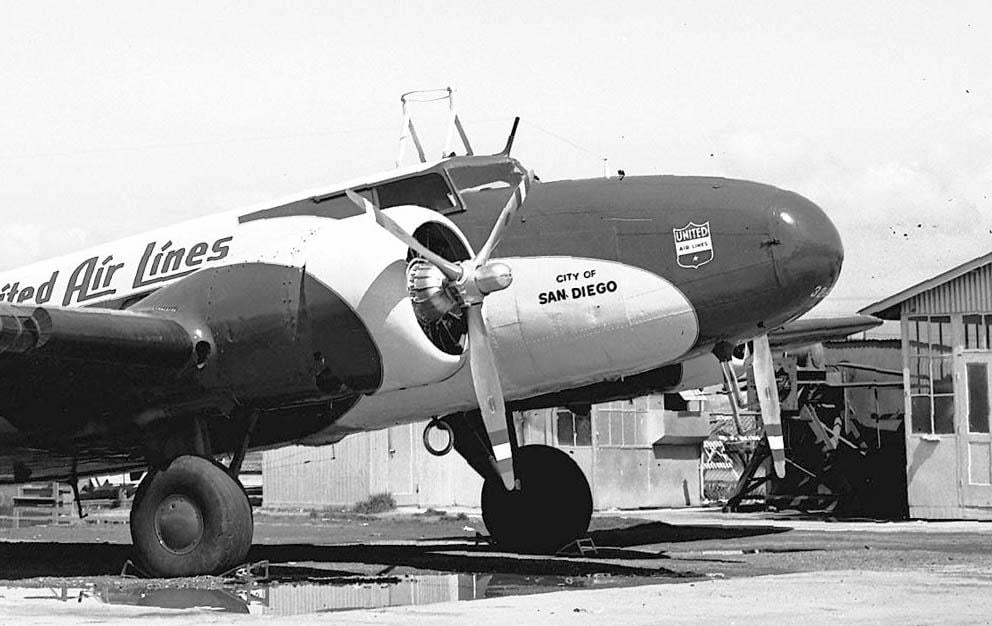
17. Variable-pitch Propeller
The ability to alter the pitch of the propeller blade in flight enables better climb performance and greater engine efficiency. A low-pitch or fine angle is best for takeoff and climb because this allows the engine to run at higher speeds and develop more power. At higher altitudes, in less dense air, a high or coarse pitch angle is preferred for optimizing efficiency by allowing the aircraft to cruise at higher airspeed and reduced rpm. Hamilton Standard developed the first practical system to change blade angle in flight for the Douglas DC-1 in 1933.

18. Overwing Engines
A design rule of thumb is: Do not put engines over the wing, where they can interfere with the aerodynamics. But more designers are ignoring that rule and the reason is advances in computational fluid dynamics (CFD). The counsel against overwing engines appears to have originated with VFW-614, a commercially unsuccessful small airliner of the 1970s designed by VFW-Fokker. But interference between airflows over the wing and pylon caused flow separation that limited cruise speed to Mach 0.65. Eyebrows were raised when Honda chose over-the-wing engine mounts for its HondaJet light business jet, but CFD came to the rescue.

19. Aeronautical Charts and Airport Maps
Aeronautical charts have come a long way since Elrey Jeppesen first sold printed copies of his copious notes on landmarks, elevations of obstructions and airport runway information for the airmail routes he flew with the Boeing 40B biplane. Today, charts, approach plates and airport diagrams are available on practically every personal electronic device carried by pilots, updated on 28-day cycles. Enhancing situational awareness is “own-ship” position made possible by GPS or other global navigation systems.

20. NACA-series Airfoils
In 1933, the National Advisory Committee on Aeronautics (NACA) published a landmark report on the characteristics of 78 airfoil sections tested in the variable-density wind tunnel at Langley, Virginia. This introduced a numbering system that indicated the airfoil’s critical characteristics: maximum mean camber, its position and maximum thickness. This was later expanded to include leading-edge radius and position of maximum thickness to define an airfoil profile. NACA’s work formed a foundation for wing design for decades, the 230-series proving popular.
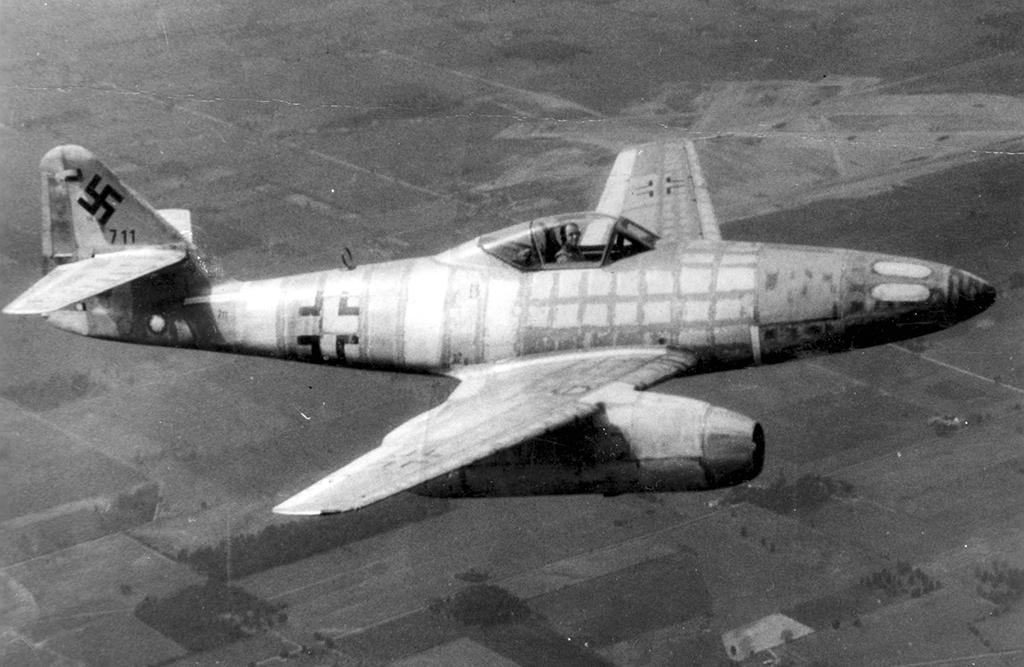
21. Auxiliary Power Unit
The first airborne auxiliary power unit (APU), in the form of a small petrol engine, appeared during World War I. During World War II, U.S. bombers such as the Boeing B-29 were fitted with a “putt-putt” to start the engines, while the Germans used small two-strokes to start their early jet engines. The first gas-turbine APU was the Garrett AiResearch GTC85 on the Boeing 727, which was used for engine starting and air conditioning on the ground. AiResearch become Honeywell, a major supplier of APUs alongside Pratt & Whitney. The latter provides the largest APU in use, the Airbus A380’s 1.3-megawatt PW980A.
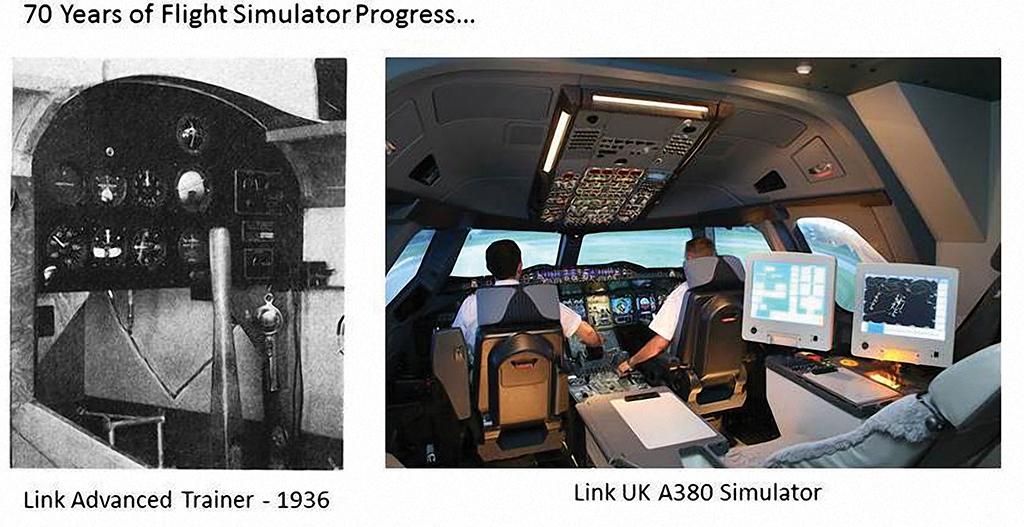
22. Flight Simulator
The September 1936 issue of Aviation helps reveal the vast changes that have taken place in flight simulation fidelity over 70 years. An article extols the virtues of the new Link Advanced Trainer, which “not only reproduces all conditions of instrument flying, but embodies an automatic course recorder” that plots out the student’s course in pen and ink, “even including slight turns and minute errors in compass headings.” Known as the “Blue Box,” the Link simulator was first built in 1929 to teach instrument flying skills.

23. Aircraft Carrier
The modern aircraft carrier is a confluence of inventions. The first purpose-designed “flat top” was Japan’s Hosho, commissioned in 1922. The arrestor wire was invented in the U.S. in 1911, followed in the U.K. by the angled deck in 1945, the steam catapult in 1950 and the optical landing system in 1952.
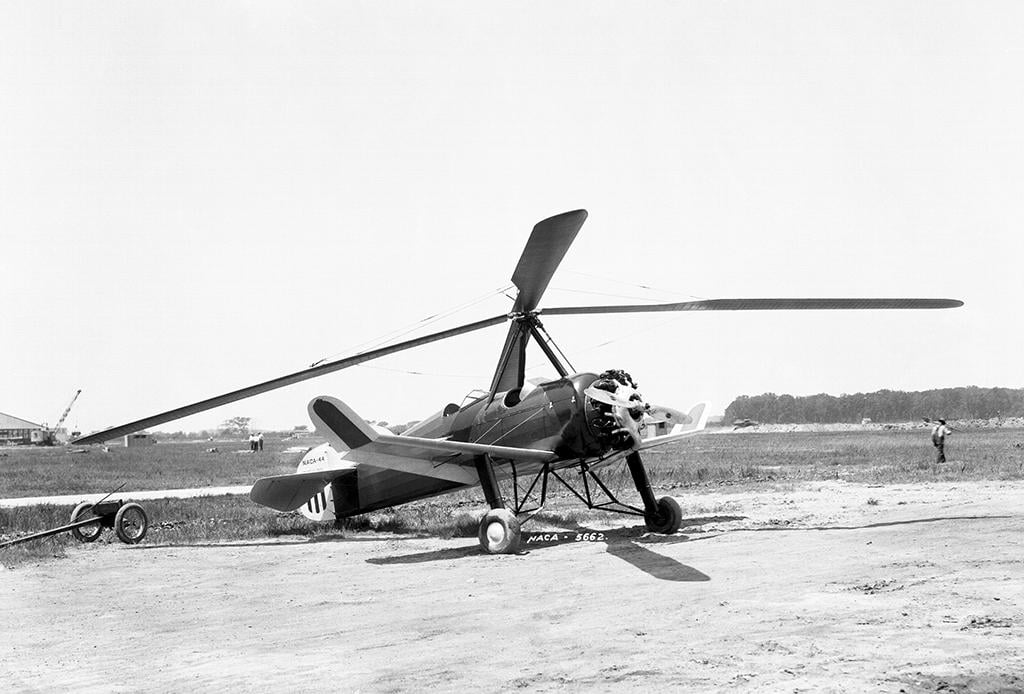
24. Autogyro
By the time Sikorsky flew the VS-300 in 1939, the autogyro had been flying for more than 15 years, but the first commercially successful rotorcraft would not survive the invention of the modern helicopter. An autogyro, or gyroplane, has an unpowered rotor driven by air flowing through the disc, otherwise known as autorotation, so it cannot take off or land vertically unless the rotor is spun up in advance. But autogyros can take off and land in short distances and fly safely at low speed, and they pioneered many of the features that made helicopters practical. Spanish engineer Juan de la Cierva invented the “Autogiro” in 1920 and developed the articulated rotor. This made the aircraft stable, and Cierva’s first successful autogyro flew in 1923. Another autogyro, Austrian designer Raoul Hafner’s ARIII Gyroplane flown in the U.K. in 1935, was equipped with cyclic and collective blade pitch control, which became standard on helicopters.

25. Checklist
The prosaic checklist. The ritual and boredom of going through it. Yet the checklist’s impact on air safety cannot be denied. No one is quite sure when and where it arose. One version, told in Atul Gawande’s book The Checklist Manifesto, is that it came about after a predecessor of the B-17 crashed in a 1935 fly-off to win U.S. Army Air Corps business. An investigation revealed that the crew had forgotten to release elevator and rudder locking mechanisms. Instead of urging that crews be more experienced to fly the complicated, multi-engine airplane, someone at Boeing thought, “Why not create simple lists of tasks to remind all pilots of the steps to follow?”
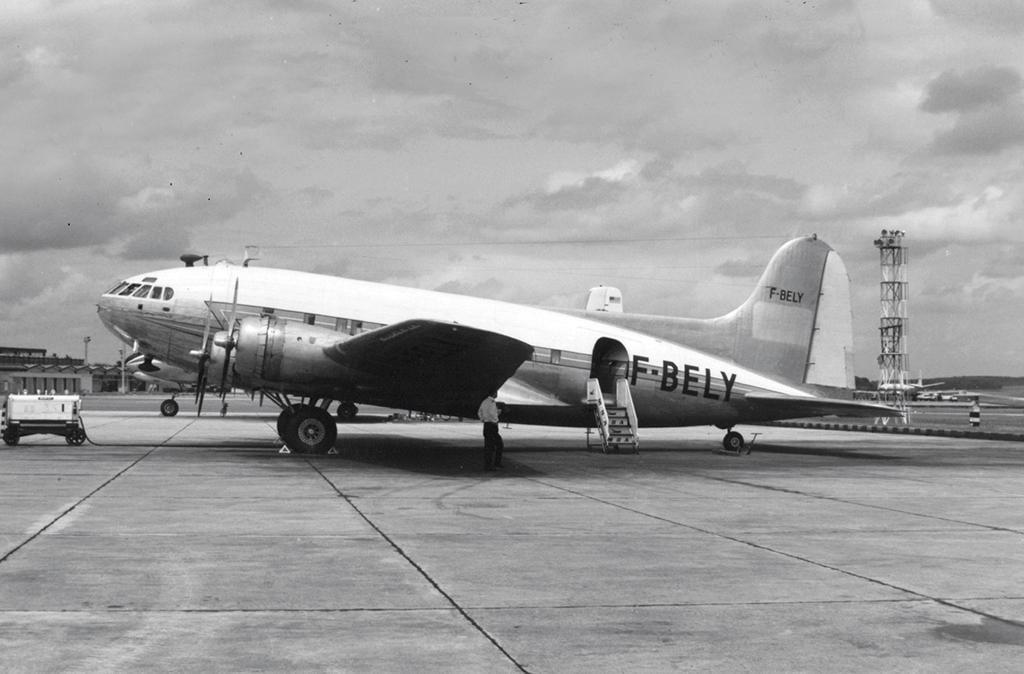
26. Powered Controls
As aircraft increased in size, balancing control-surface forces with set-back hinges, horn balances or aerodynamic tabs was no longer sufficient. Hydraulically boosted controls were tested by Douglas for its experimental DC-4E, but rejected for the production DC-4. Instead, the Boeing 307, flown in 1938, was the first airliner with hydraulically boosted elevators and rudder.

27. Stressed Skins
The real drive toward metal-made aircraft and away from fabric and wood construction was led by Hugo Junkers. After early tests of the smooth-skinned, tin-plated steel J1 monoplane in 1915, Junkers switched to a new aluminum alloy, Duralumin, which he used in corrugations running fore and aft that contributed to structural strength. But the invention of stressed skin really paved the way for the future of aviation. Developed theoretically by Herbert Wagner in Germany in the late 1920s, stressed skins also absorbed bending loads and were part of a structure where spars, ribs and skin all formed an integral part of the aircraft’s strength. The first practical stressed wing structure was independently devised and made by Jack Northrop for his X-216H flying wing.
Aviation and aerospace advanced rapidly in the first decades after the Wright brothers’ 1903 flight. Wind tunnels brought understanding of lift and drag, wood-and-wire biplanes gave way to the stressed-skin monoplanes, wing warping to hydraulic-boosted flight controls. Altimeter, artificial horizon, radio aids and aeronautical charts entered the cockpit, while on the ground airports proliferated and air traffic control brought order and safety to a booming industry. The autogyro’s brief success was eclipsed by the practical helicopter. From the lowly checklist to the lofty liquid rocket, the industry moved forward.
100 Top Technologies: 'Protecting the Pilot' to 'Keeping it Together'
100 Top Technologies: 'Bonded Structures' to 'Automated Throttles'
100 Top Technologies: 'Tipping the Wing' to 'Printing the Future'
Check 6 Listen as Aviation Week editors discuss—and debate—why they chose the aviation technologies and innovations featured here. AviationWeek.com/podcast

See more content from the 100th anniversary issue of Aviation Week & Space Technology

